#there’s some problems with the gravity simulation
Text
So I’d like to talk about this particularly wild theory that’s been percolating in my brain for the last couple of weeks;
That, among other things, Suletta being noticeably taller than the other girls her age at the academy is actually foreshadowing something.
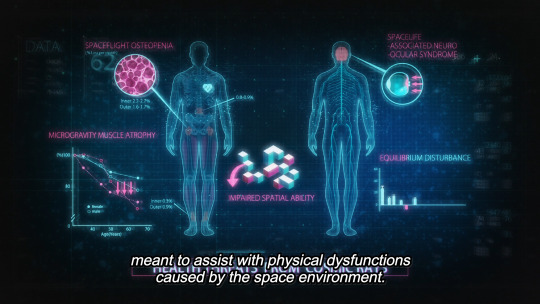
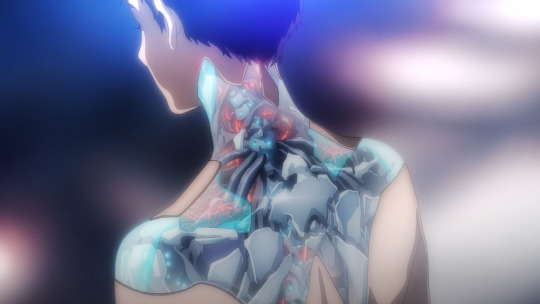
One of the first things we learned about the background lore of Witch From Mercury is that the GUND Format system that is the basis for Gundams originated as medical technology. More specifically, cybernetic augmentation that would allow humans to better acclimate to the harsh environment of space, as we see with Elnora’s prosthetic arm.
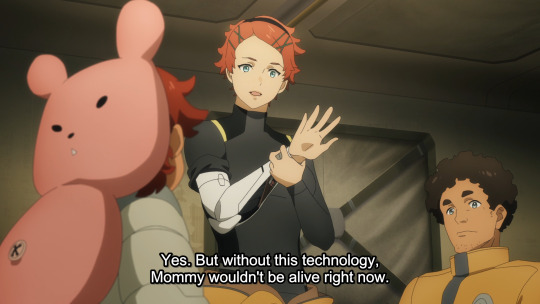
Now, one notable case of the major problems of living in space is simply dealing with differing levels of gravity. You see, living for an extended period of time in zero-gravity or even just a lower-gravity environment can have serious affects on the human body. For one, you’d grow a bit taller as there would be less weight effecting your body, but as your muscles adapted more and more to the lower-gravity, you’d conversely find it all the harder to re-adapt to a HIGHER gravity environment like Earth. And that is especially the case for a person who was BORN in a lower-gravity environment and grew up there. They would be proportionately taller than someone who grew up on earth, but also have much weaker bones and would find it nearly impossible to live on Earth. Anyone who has read/watched The Expanse should be quite familiar with the effects of ‘gravity torture’ on those who are native to a low-gravity environment.
So what does this have to do with Witch from Mercury? Well, I think it should be pretty obvious that the GUND system’s cybernetic augmentation would be an ideal solution to this very problem. A low-gravity native who reinforced or even replaced their skeletal and musculature system with cybernetics could mitigate or even entirely remove their problems with higher-gravity environments.
Now let’s consider the fact that Suletta seems to have spent the first four years of her life in and out of microgravity on a space-station, and then has spent the subsequent thirteen years growing up on Mercury, a planet with a third the gravity of Earth’s. So Suletta being notably taller than a lot of her peers could be an indicator of her having grown up in a lower-gravity environment.
And when we consider how Suletta’s family was closely involved in the development of the GUND system, to the point where her Mom already has a prosthetic arm, and the fact that Suletta doesn’t seem to be bothered by what is probably Earth-like simulated gravity on the academy, I have a serious hunch that Suletta has already received a number of cybernetic implants and augmentations.
For example, we’ve seen that Suletta is very reluctant to actually get into any fights since arriving at the academy. What if part of the reason she’s been so reluctant is because Suletta knows she’s way stronger than she looks and doesn’t want to seriously hurt anyone? Like what if at some point we finally see Suletta snap and actually throw a punch at someone… and she just sends some poor bastard straight-up flying across a room and shatters their leg/arm/skull?
Plus, Suletta being augmented by the same technology that went into the Aerial Gundam would make the two being referred to as ‘sisters’ all the more fitting.
521 notes
·
View notes
Text

I think if John and Talla had been a bit more creative they could definitely have solved their sex problem where Talla always injures John because of her super strength
Just a few ideas for solutions:
tie Talla up (with some kind of super strong material)
Talla wears extremely heavy weights on her arms and legs so her strength is reduced
they fuck in the simulator - the simulator gives one of them a body modification (just like Isaac's body modification that allows him to have sex with Claire) to make John stronger or Talla weaker (or, if this is a thing the simulator can do, the simulator creates Xeleyan gravity but only for Talla)
they fuck in the simulator - they're actually in different places away from each other but the simulator creates an avatar for both of them. each avatar perfectly mirrors the actions of the corresponding real person, so they're both having sex with a simulated avatar but it's indistinguishable from having sex with each other except that Talla's avatar has human strength and John's has Xeleyan strength
I don't really believe that in this world no one has ever found a solution to the problem of Xeleyans and other species wanting to hook up, tbh they gave up way too easily
25 notes
·
View notes
Text

Dark energy could be measured by studying the galaxy next door
Researchers have found a new way to measure dark energy – the mysterious force that makes up more than two-thirds of the universe and is responsible for its accelerating expansion – in our own cosmic backyard.
The researchers, from the University of Cambridge, found that it may be possible to detect and measure dark energy by studying Andromeda, our galactic next-door neighbour that is on a slow-motion collision course with the Milky Way.
Since it was first identified in the late 1990s, scientists have used very distant galaxies to study dark energy but have yet to directly detect it. However, the Cambridge researchers found that by studying how Andromeda and the Milky Way are moving toward each other given their collective mass, they could place an upper limit on the value of the cosmological constant, which is the simplest model of dark energy. The upper limit they found is five times higher than the value of the cosmological constant that can be detected from the early universe.
Although the technique is still early in its development, the researchers say that it could be possible to detect dark energy by studying our own cosmic neighbourhood. The results are reported in The Astrophysical Journal Letters.
Everything we can see in our world and in the skies – from tiny insects to massive galaxies – makes up just five percent of the observable universe. The rest is dark: scientists believe that about 27% of the universe is made of dark matter, which holds objects together, while 68% is dark energy, which pushes objects apart.
“Dark energy is a general name for a family of models you could add to Einstein’s theory of gravity,” said first author Dr David Benisty from the Department of Applied Mathematics and Theoretical Physics. “The simplest version of this is known as the cosmological constant: a constant energy density that pushes galaxies away from each other.”
The cosmological constant was temporarily added by Einstein to his theory of general relativity. From the 1930s to the 1990s, the cosmological constant was set at zero, until it was discovered that an unknown force – dark energy – was causing the expansion of the universe to accelerate. There are at least two big problems with dark energy, however: we don’t know exactly what it is, and we haven’t directly detected it.
Since it was first identified, astronomers have developed a variety of methods to detect dark energy, most of which involve studying objects from the early universe and measuring how quickly they are moving away from us. Unpacking the effects of dark energy from billions of years ago is not easy: since it is a weak force between galaxies, dark energy is easily overcome by the much stronger forces inside galaxies.
However, there is one region of the universe that is surprisingly sensitive to dark energy, and it’s in our own cosmic backyard. The Andromeda galaxy is the closest to our own Milky Way, and the two galaxies are on a collision course. As they draw closer, the two galaxies will start to orbit each other – very slowly. A single orbit will take 20 billion years. However, due to the massive gravitational forces, well before a single orbit is complete, about five billion years from now, the two galaxies will start merging and falling into each other.
“Andromeda is the only galaxy that isn’t running away from us, so by studying its mass and movement, we may be able to make some determinations about the cosmological constant and dark energy,” said Benisty, who is also a Research Associate at Queens’ College.
Using a series of simulations based on the best available estimates of the mass of both galaxies, Benisty and his co-authors – Professor Anne Davis from DAMTP and Professor Wyn Evans from the Institute of Astronomy – found that dark energy is affecting how Andromeda and the Milky Way are orbiting each other.
“Dark energy affects every pair of galaxies: gravity wants to pull galaxies together, while dark energy pushes them apart,” said Benisty. “In our model, if we change the value of the cosmological constant, we can see how that changes the orbit of the two galaxies. Based on their mass, we can place an upper bound on the cosmological constant, which is about five times higher than we can measure from the rest of the universe.”
The researchers say that while the technique could prove immensely valuable, it is not yet a direct detection of dark energy. Data from the James Webb Telescope (JWST) will provide far more accurate measurements of Andromeda’s mass and motion, which could help reduce the upper bounds of the cosmological constant.
In addition, by studying other pairs of galaxies, it could be possible to further refine the technique and determine how dark energy affects our universe. “Dark energy is one of the biggest puzzles in cosmology,” said Benisty. “It could be that its effects vary over distance and time, but we hope this technique could help unravel the mystery.”
68 notes
·
View notes
Text
My labor, and my leisure too (pt. 1)
I've been poking around some ideas lately, about the difference between what feels like a happy (or at least satisfying) ending to a character and what feels like a happy (or at least satisfying) ending to the audience.
This is unedited, un-beta'd, and incomplete. I've already started working on the next bit; I just didn't want to wait to yeet it out into the universe.
********
If Nile hadn’t been frustrated nearly to tears by the time the rest of the team came in, she might have noticed that Nicky and Joe seemed oddly subdued and distracted. But she was, so she didn’t – all she could see was the endless array of charts and computer displays swimming before her eyes.
“I have run so many simulations I feel like I’m stuck in a time loop,” she said as they all gathered around the output table. “I’ve recalculated all the parameters to the limits of possibility, sometimes beyond. And I can’t find any way we pull this off.”
“But the intel we just got – “ Gert was new, had been with them for less than twenty years, and hadn’t quite let go of the idea of being a superhero.
“That intel is what makes it so hard.” Gert frowned, and Nile quickly added, “Don’t get me wrong, it’s fantastic you were able to track it down. If you hadn’t, we’d be totally screwed.”
“So what’s the problem?” Lijie asked. She ran her finger along one of the infiltration routes in the display. “This looks straightforward to me.”
“The problem,” Nile said, “is the timing. Whoever lays those charges, they’re not getting out. Any delay long enough for exfil is long enough for them to be detected and disarmed by the security system.”
“But we’re shutting down the security system. I walked you through that just the other day. I’m telling you, it’s foolproof.” Jerrah, over 1600 years old, hated that Nile still referred to him as one of “the kids,” but his temper and defensiveness had not mellowed with age and at times like this she felt entirely justified.
She heroically resisted banging her head against the table. It would only scramble the schematics. “Your plan for shutting the system down is foolproof. It’s great. It will absolutely work. But what we didn’t know until recently is that it’s on an automatic reset timer that will boot it back up after a set amount of time. You’re welcome to review the programming,” she ran her gaze around the team, addressing them all, “in fact I’d love it if you’d all review the scenarios I’ve run. Just to be sure. But I’m telling you – the numbers just don’t work. The support team will be fine, but the one with the charges is not getting out alive.”
Gert laughed. “I thought that was the point of us. We don’t have to get out alive.” They looked around and noticed no one else shared their amusement. “What am I missing?”
Jerrah answered while scrolling through Nile’s calculations. “An explosion this size isn’t just going to take out the complex, it’s going to wipe out the whole atmo dome. Anything not secured will get blasted out of the gravity well. You remember about Quỳnh? This would be infinitely worse. Literally.”
“But what about – “
Step by step, Nile walked them through it. How any equipment robust enough to survive the explosion would make it impossible to complete the mission to cause the explosion in the first place. How fast the debris and bodies would be moving with no inertia to slow them down. The number of bodies there would be, and the limits of their ship’s sensors. All of it. The inescapable physics, and the impossibility of making that choice.
“We have to scrap the plan,” she said, “start over from scratch. We’ll find another way, somehow, to – “ Joe and Nicky had withdrawn a bit from the group and were having their own private conversation. This, too, should have been a sign: they didn’t do cross-talk during mission briefings, and through all the months of planning they’d taken this mission particularly seriously.
But Nile was too frazzled and distracted for this to register, so she just barked out, “Hey guys! Are we boring you? Or do you have something you’d like to share?”
Her friends, mentors, brothers, exchanged a final loaded glance and then refocused on the group. Nicky put his arm around Joe’s shoulders, and as he did so his sleeve rode up, just a little, showing an odd patch of dirt on the inside of his upper arm. She found herself staring at it without knowing why.
“Joe and I will lay the charges,” Nicky said.
“Don’t be stupid,” Lijie snapped. “Nile’s right. Do you really think we’re going to just let you guys float around in vacuum forever?”
Three things happened simultaneously in an instant that felt to Nile like a lifetime:
…Nile noticed that the knuckles on Joe’s right hand were also weirdly dirty.
…and Joe said, “Of course not. We’re not asking you to.”
…and Nile thought Bruises. Not dirt. Bruises.
Then time slammed back into place and she cried out from the force of it.
And the room erupted into chaos.
#the old guard#the old guard fanfiction#my fic#nile freeman#yusuf al kaysani#nicolo di genova#kaysanova#title is from emily dickinson#because i could not stop for death
56 notes
·
View notes
Text
DOES DARK MATTER REALLY EXIST??
Blog#264
Saturday, January 21st, 2023
Welcome back,
The inexplicably large rotation velocities of stars in galactic outskirts have led physicists to the idea that, in addition to the forms of matter familiar to us, the galaxies must contain a mysterious entity known as dark matter.
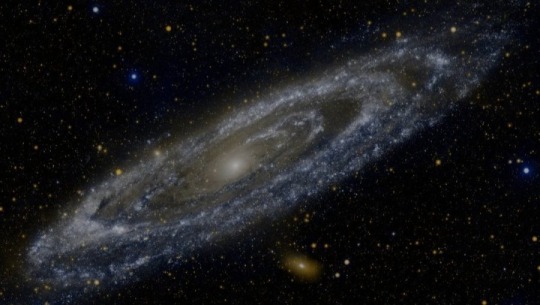
The contribution of this substance to the gravity field of a typical galaxy can keep rapidly rotating stars in their orbits if dark matter makes up about 85 percent of the matter in the universe.
But is dark matter really necessary to reconcile our theories with astronomical data?

A new study published in the Monthly Notices of the Royal Astronomical Society revived the idea that it is not, and that the inconsistency between theory and data can be resolved by changing the laws of gravity.
Scientists have proposed many candidates for the dark matter constituents, but all attempts to observe them in Earth-based experiments have failed so far. These failures have motivated scientists to look for other explanations for the contradiction.
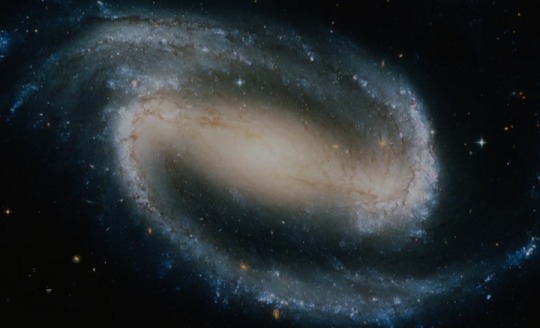
The most promising alternative to the dark matter hypothesis is Modified Newtonian dynamics, or MOND. According to this model, the observed velocities of stars become consistent with our physical theories, if one appropriately modifies the equations of gravitational interaction.
However, this theory ran into major difficulties when astrophysicists discovered galaxies whose stars move at the velocities consistent with the conventional understanding of gravity without the presence of dark matter.

In dark matter theory, these observations are explained by some cosmic phenomena which resulted in galaxies losing this substance. MOND, in turn, seems to be inconsistent with these data.
A team of physicists led by Dr. Indranil Banik of the School of Physics and Astronomy at the University of Saint Andrews addressed this problem, and has found a way to resolve the contradiction. These researchers proposed that the star velocities in the problematic galaxies were found incorrectly.
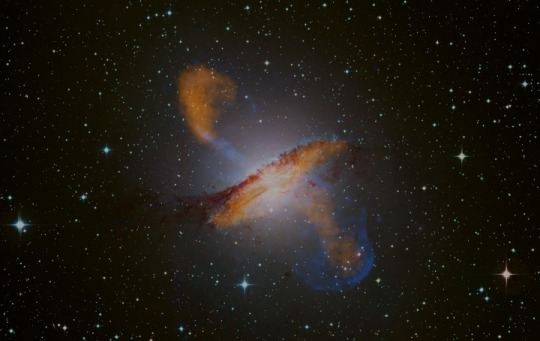
These velocities are measured indirectly — only the velocity component along the line of sight can be deduced from spectroscopic measurements. The perpendicular component is then found from the above component and the apparent ellipticity of the galaxy, which depends on the inclination between the galaxy disc and sky plane: the smaller the inclination, the greater the total velocity.

The scientists assumed that the gravitational interaction is governed by MOND rather than the conventional theory of gravity, and performed a simulation of an evolution of one of the problematic galaxies called AGC 114905, that has been studied thoroughly before.
Originally published on www.advancedsciencenews.com
COMING UP!!
(Wednesday, January 25th, 2023)
"WHAT IS OUR UNIVERSE EXPANDING INTO??"
#astronomy#outer space#alternate universe#astrophysics#spacecraft#universe#white universe#space#parallel universe#astrophotography#cosmology#cosmos
103 notes
·
View notes
Note
if you're gonna talk about your ocs unprompt let me prompt you to talk about them
seriously i wanna read anything on ur ocs i am very interested
thank you for the interest! my guys mean a lot to me so it's very touching someone else would want to hear about them
i usually work on my ocs one at a time. and it is flight of the crows' turn
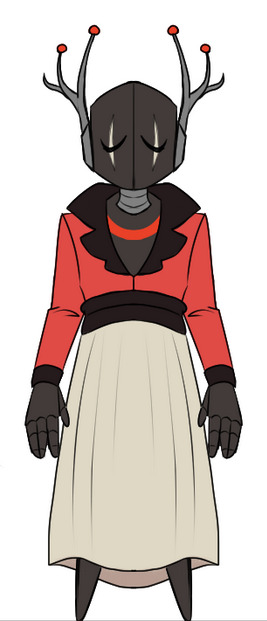
i dont have a proper reference outside of my iterator lineup so this is the best picture i have (that i did draw)
crows IS named after the jhariah song of the same name. im kind of obsessed with jhariah's music and i wanted an iterator inspired it. flight of the crows is also a kickass name. design is also inspired by the colors that he uses in his albums and i do have art of crows (and lost. but i will get to her later) using album palette
crows is one of the older iterators out of my guys (not one of the first few ever made but more like. 2nd-3rd gen iterator, maybe a bit higher depending on how many generations there really were)
crows' city was home to a large population of engineers, which helped improve and revise newer iterator designs. naturally, crows would lean about this as well, and became very invested in the subject
they were eventually skilled enough to alert their ancients to problems before the automated systems they made, or routine checks by the ancients. crows became pretty self-sustaining while they were around
but with them gone, they continued their learning by themselves, designing their own mechanical blueprints in simulations or using their puppets' hands to work with real materials. i imagine their can seems a little dangerous at times, with tools and spare metal and wires, but it is kept organized like pearls are (having control of gravity and all)
personality wise, crows is very reserved. quiet type, really doesn't speak unless prompted to by someone else. when prompted, has very detailed and seemingly well-thought out, calm responses. a great listener, but they tend to keep people at arms length
everyone except 2 people
before the ancients died, crows made contact with an iterator of a different local group (meatcatt's) lost in the dark.
lost's ancients discovered that she was build right on top of a huge pool of void fluid, and was being converted into more of a drillsite. lost was expected to come up with efficient solutions for how to do this, but she wasn't familiar with void drills.
and therefore asked for help in broadcasts. crows responded because they like building things and the two of them worked together on the projects, and also began to naturally know each other beyond the projects. and then were also gay
one day, lost requested assistance with enhancing herself. and crows, a mechanic, naturally agreed. they made and passed blueprints to lost in order to alter her puppet, and eventually their whole structure
however lost's ancients did not take kindly to this at all. and they decided to cull lost before she got very out of control. i imagine it is something crows feels a lot of guilt about, and it is very bottled up
their relationship with my other iterator, chains by summer, was a very close friendship. maybe almost dating but im going to say friends. i think crows often gave advice to summer when his ancients were overbearing or got into spats that they made him decide. i think the others in crows' local group would also come to them for advice, but summer made an attempt to get to know crows better as a person. i imagine he was very persistent on asking how they were feeling and what they were up to in their projects. and crows would share, also choosing to trust summer with a bit of their own feelings. mostly.
there was one project that they kept a secret from them-- and it honestly ended their friendship
with no more ancients, their structures were dying. it would eventually fall, killing some of the older model iterators and leaving the newer ones to rot in a fate worse than death. crows wanted to see if they could escape their rotting body, and live simply as the puppet. it was a very risky ordeal, and crows, knowing summer, knew that he wouldnt take kindly to an idea that had a very high chance of sudden death regardless
so as they were making preparations for their plan, they stopped talking to summer, saying that they were being distracted from their work, and the two of them should just stop.
and after cutting it off with summer, and the rest of their local group, they would lure creatures with dexterous hands (mainly scavengers and slugcats) to find them scrap metal pieces and wire so they could build their own, autonomous tools that they could write code to automatically preform actions (can't reach their umbilical with their hands!)
and eventually it would work. crows needed to learn how to walk and balance with gravity involved, but they could leave their can. as long as they were around centipedes or had electric spears to charge
crows would then go on a journey to free the iterators of their own local group, as well as the local group nearby where lost used to be
summer was the last iterator they freed because they felt awkward. which was really torturous for summer because suddenly all of his iterator pals stopped talking to him and that boy lives on social interaction day to day
#oc: fotc#asks.txt#soaricarus#gahha thank you again#are skirts appropriate for metalworking. likenly not but they do what they want#crows uses they/any pronouns#so mainly they but anything works
19 notes
·
View notes
Text
Some Donnie Headcannons

Donnie learned everything by memorizing it in song form. This is because Splinter would put on shows for the each of them so he could just... rest for a little bit. Donnie would always want to put on a science show with song and dance numbers and always loved things like that. (Also, I think the Atomic Lass character was a side character in some of the Jupiter Jim movies and that is probably his favorite of all time...and she probably had song and dance numbers of some sort... maybe... that's the head cannon)

My siblings will sometimes ask me a question as if I'm the encyclopedia. I think the others would do the same to Donnie.
Mikey: Hey Donnie! Do you think I could do a *insert ridiculously difficult skateboard trick*
Donnie: Well, you'd have a 12% chance in perfect conditions, given your center of gravity and your average rate of acceleration... but these are less than optimal conditions Angelo, so my conclusion would be: not reccomend-
Mikey: *proceeds to do it*

Donnie likes to infodump to Mikey as he's drawing. Mikey specifically - although he will infodump to anyone and everyone - because Mikey is somewhat listening, and it's nice to get thoughts into words without having to worry about criticism or being blatantly ignored.
(Mikey will pop in with random questions about if his art looks right, and sometimes gives Donnie wild suggestions that Donnie takes and runs with.)
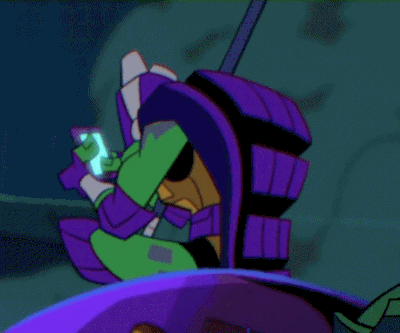
Tried to research the supernatural after discovering the hidden city, that's why he was able to get his goggles to work with the crystal, but he got frustrated after figuring out there aren't much rules with that.
ALSO ALSO: He doesn't like quantum physics, or chemistry (I don't remember any evidence to the contrary) because there are some blockages to what can be known, and he wants all the variables.
And he's so bad at history. Like ridiculously bad. He often has dreams of going to school and being with his 'intellectual peers who can actually have a conversation with me' but he would fail history.

He has made an 'evolving bio' for all of his brothers and his dad, and all of the recordings go into filtering out necessary information to go into digital files for all of them. Definite plot points and concrete evidence to predict their future patterns and any consistent weaknesses.
This is the info he used to make his gifts with.
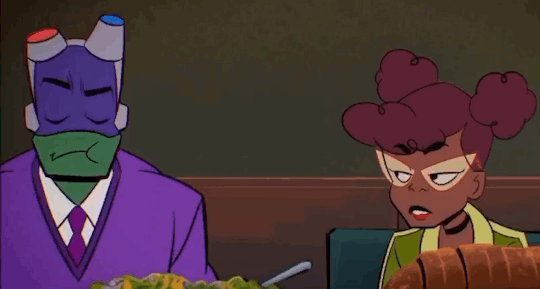
Donnie would sit with April as she explains her homework and how to do it, and he would obsess over finding the information to solve the problem and be useful to her. April never had THAT much motivation to do homework, and Donnie had way more energy re-explaining it than her teachers.
Donnie also loved being right.

Has made simulations trying to model social interactions before they happen so he can figure out how to communicate before the day starts.
(Basically pre-defining the variables he will need to call upon throughout the day so he doesn't get an error message.)

Everything can be explained with science or coding or engineering. Everything.
(He has tried to formulate the science for fashion and dancing... in essence applying science logic to those things.)
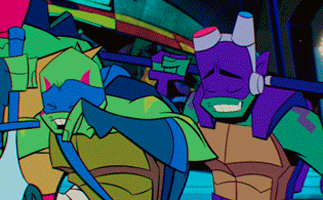
He may deny that he is wrong on the surface, and he will apologize for being wrong - as long as it isn't mystic beings that are replacing him-
But being wrong eats at him.
Donnie, the tech one, the one who is supposed to be smart, the one who has a subset that he is great at. This is his use, this is his value...
and he was wrong.
#rottmnt#rise of the teenage mutant ninja turtles#rise of the tmnt#rottmnt fandom#rise donnie#donatello#teenage mutant ninja turtles#tmnt2018#rise donnatello
10 notes
·
View notes
Text
let's look at the coastline in elden ring.
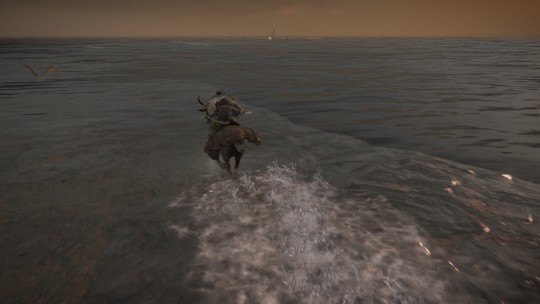
it's tricky if you hit it at the wrong time of day; the simulatedly foggy marine layer glows the same color as the horizon so you end up letting torrent run off the edge like a fucking dufus. but sneak up on it when it's a little dark out, and there it is, just a chunk of the world razored off
but no if we want the main show, we have to aim the camera downward like so
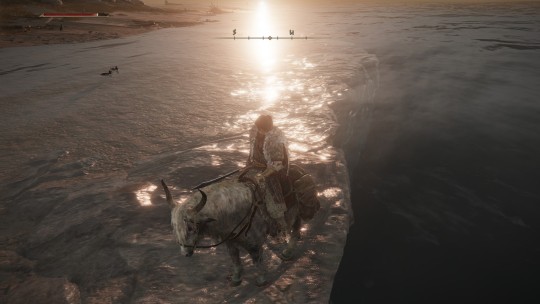
what i think is most interesting about the abyss in elden ring is that it being entirely and unconvincingly simulated doesn't do a thing to mitigate the uncanny valley dread of it
when you fall off of something in this game, gravity chucks you like brock fucking lesnar, your character having precious little inertia, their falling animation not quite matching up with their bearing and angle. they sorta stay upright, puppetlike
if you want to take this journey with me, you gotta wonder what happens when your little elden ring girlie falls off the edge but she doesn't die. the death camera stays in place, fixed right over the ocean's surface, still half-aimed at the eerie undersea drop, while the tarnished vanishes into the black
it's a scary enough proposition in real life. what i think really kicks this concept across the line into nightmare fuel is the constraint of janky video game physics, the weird way you drop through the water without any convincing representation of fluid resistance. it's hard not to imagine falling like that forever
when i was your age, whippersnappers, we didn't have any fancy schmancy backrooms. we had ecco the dolphin's open ocean level:
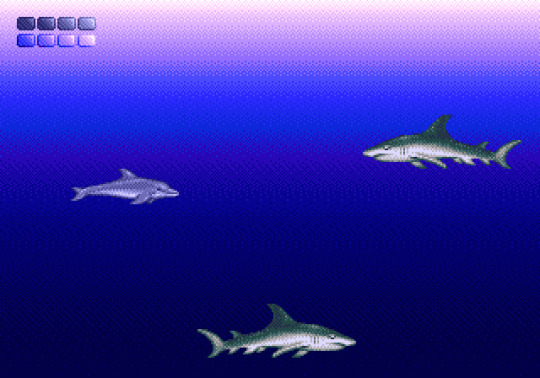
this is the video game that taught me what thalassaphobia means.
ecco is an infuriating but beautiful puzzle/exploration type deal where you play as a cute lil dolphin. most of its stages consist of gorgeously-drawn undersea caverns, coral reefs, lush and overgrown lagoons, etc etc.
i don't know how it ends, though, because at some point you have to play Open Ocean
the scenery drops out entirely, leaving your lil dolphin self stranded out in an endless, monotonous scroll of deep blue. water filters in murkily from the surface in pale white, plummeting its way down a crispy noise-diffusion layer of darker and darker blues
open ocean.
i couldn't handle this. i'd gamely attempt the level, careening to the right as fast as my rubbery little body could move, but i'd get more and more anxious until i had to pause the game and turn it off. i couldn't really understand what the game was doing to me
i tried again a few times. skimming the bottom felt like the natural move, there being a minimal but ever so slightly comforting texture scroll of coral reef, but the problem was the sharks. sega genesis only had 256-320 pixels of horizontal screen space to work with, so flying madly around the place felt like swimming blind; i'd always smack facefirst into a shark and freak out.
the surface wasn't much more comforting
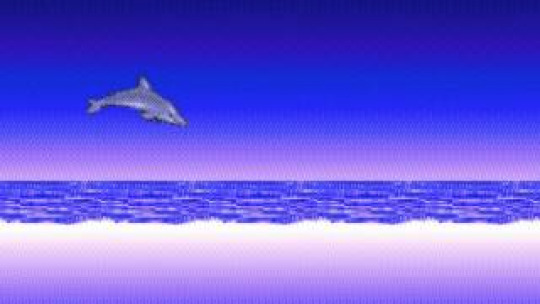

i remember this being a weird turning point in the game's tone. it's warm and vibrant and so utterly normal up until this level. and then suddenly it's this eerie music that never gives you a moment to rest, and an empty, alien sky with a diffuse light that comes from nothing, and artificial-looking silvery waves that repeat onward and onward and onward
elden ring's water looks realistic enough; your brain can agree ah yes, that is water without too much trouble. that it does look real enough is the problem, because if you can trust that it's water, you can trust that it'll act like water. it's creepy because when you fall through it like it's nothing more than fog, the reassuring illusion it provides of a physical medium you could swim through is shattered. you don't realize you're plummeting into a bottomless pit until you're already plummeting into the bottomless pit
by contrast, ecco's water is creepy because the illusion is never there to begin with. up until now the water has held to certain rules: you can go in any direction, you can leap across the surface, and your world is reasonably constrained by the ocean floor. open ocean takes away the floor, save for a vague hint of it at the bottom - yet it still feels like you could swim down forever if you wanted. also it throws sharks at you
these are mostly weirdo thoughts i kept to myself for most of my life, except for a stint back on the early days of reddit where i wrote a little essay about thalassaphobia on r/gaming. people seemed to get it
i was pleased as punch when eventually the concept of liminal spaces had penetrated the internet's public awareness. it gave language to something i understood but could never really ideate! not only was i able to understand why the safeway parking lot in tucson unnerved the shit out of me, but also i recognized at once that the ill-defined boundaries of ecco's open ocean and elden ring's jarringly bottomless sea cliffs were prime examples of artificial liminal spaces. the concept was definitely too abstract for the web and eventually it got diluted into horror game schlock fuel, but early on they had the right idea in that these spaces could invoke feelings of fear, loneliness, sadness, wistfulness, curiosity, more.
i think it's really neat that video games can do that, too. here's my very favorite liminal space:

if i had the wherewithal, i would have made this a little embedded video with sound, so you could hear the crunchy 8-bit din of the ocean in this weird little corner of the original legend of zelda. little 4-6 year old me loved to park link on this sliver of a mountain path and just kinda vibe here.
this screen's tilemap was so ruthlessly simple that you can't help but fill in the details in your mind's eye. isolated from the rest of the map, there's no telling if this little chunk of black/orange/yellow rock is meant to be a cliff looming over the sea, or some kind of depression in a sort of seaside crag, or perhaps something stranger still, known only to the japanese gentlemen who plotted it out.
my preferred mental image was that of link winding his way up a path no wider than he, carved into the surface of this enormous rocky monolith. in this context the path's presence in the foreground makes it feel as if it's somehow 'hidden' from the ocean, a safe refuge, free of meddling octoroks and zoras, to recuperate, soak in the sunlight, and from a secretive vantage, look out over a span of nearly-blank water that must go on forever.
i feel like this part of zelda is supposed to invoke the same thalassaphobic response i get from elden ring and from ecco the dolphin, but the presence of the cliffside, and more specifically the way the path is couched toward its center, makes it feel like we're regarding the ocean from far, far above. it might go on endlessly baby, and beyond its reaches the world might be nothing but vapor, but we're safe up here. the weird high concept void can't get us
5 notes
·
View notes
Note
Okay, here's a thought: you've probably noticed from posts by now that I'm working on some original space-fantasy material and I just thought I'd throw this your way—I've noticed that in film and television interior design for starships and starbases with simulated gravity tends to exist on a single-axis spectrum from "Grand Faux-Marble Hotel" to "Metal Piping Everywhere," neither of which strike me as particularly good actual design ideas for a place that people are going to live in for extended periods, not when there's no real outside to go and spend time in. So I'm just curious if you have any thoughts on what good urban design would look like for, say, a starbase. How could perhaps green-space be brought in to create a feel of going outdoors in hallways, for instance? What other solutions do you think there could be for making a sealed environment like that look more like something real people would be able to thrive living in?
okay. so i did some googling as to what a star base is and I am still confused, but I will endeavour to do my best anyway.
First of all, the practicalities. They need oxygen, they need food. Guess what creates both of those? Plants! And you've heard me talk about hydroponics: it's a super water and nutrient efficient way to grow All Things Green and I imagine that a starbase or whatever would want to be as self-sufficient as possible and won't have a problem getting solar energy either direct to their plants or to power artificial UV lights that do just as good a job. Also, seeing as there are humans there breathing out carbon dioxide: basic evolutionary science says, get the plants in first, get them as numerous as possible, that way they make oxygen pretty much on their own and you're saved from having to cart the stuff in which is an expensive and dangerous process (carbon dioxide is a lot more inert and safer to transport: when near a fire it will put the fire out rather than Big Burn). You could also utilise human, um, waste products in some variation of hydroponics that's a bit more like aquaponics. Nutrient cycling. Or bring in some fish and just have aquaponics as well?
So that being said, you've got the required Green Stuff in order to feel like you're going outside. Green plants growing all up the walls and bright light and the sound of running water. Maybe it's light and humid enough to grow some sort of ground cover as well with stepping stones so it doesn't get too worn by passerby? You could definitely make hallways and hallways of this, because space is so limited just utilise anywhere you have to grow food. And it will mean the air is fresher as well. You can get design inspo for this by looking up anything along the lines of 'green building' on any image search or Pinterest. Faeriecore meets futuristic technology: my favourite kind of vibe. Plants in the bathrooms, wherever is practical really, what you really want to think is: everything has to be super efficient, because gravity simulation is no doubt expensive and energy intensive to run. No silly extra space like the Grand Faux Marble Hotel. PVC pipes are a lot lighter than metal and won't rust when you've got all your necessary salts running through them to feed your plants, but they're not the most attractive so you want green to cover them wherever possible. Think of the plumbing: you want everything to flow from source to sink as efficiently as possible, and no nutrient, water, etc to ever be wasted. And then, on top of this basic skeletal framework, somewhere that feels liveable. Blues and greens to calm the nervous system when you're so far away from actual soil. A basic compost plant going on somewhere that recycles some of the nutrients fed back into the little soil pellets used for hydroponics and the juices that run through as fertiliser. Lots of chemical testing but make it cute little glass or plastic probes that are super quick and you can test anywhere. Everything sealed off well for the inevitable day that gravity does fail, and you want to make sure you don't lose all your water and dissolved nutrients when that happens. You probably just make entire walls out of growing green things, honestly, not the structural ones but between most rooms this will do. Herbs growing on the kitchen side of the wall, that kind of thing. Mint in the hallways that you can just pull off and chew to freshen your breath: access to chewing gum and the like will be limited.
Anyway, hope that gives you a few ideas! What I love about urban design as opposed to just interior is it sees the inside and the outside, the buildings and their layout and surrounds as a whole system and it's easy to slot in the framework of how do we meet all of our users' needs within this system as a whole? And to do so you want to create an ecosystem. You want to include both practical needs and the need for beauty; efficiency not only in terms of resources but also accessibility (I assume your dwelling population are hard at work doing Starship Things and don't have time to rush back and forth in a poorly designed area); and diverse areas for a diverse set of users: in real life cities, think of animals as well as people. On a starship/starbase, you have the possibility of having to house aliens for a while. Where would they feel safe, have their needs met, and if miscommunication does occur and they break something, where and how would it have minimal impact?
7 notes
·
View notes
Note
How do you feel about video games? Do you have a favourite? But more importantly do you have a least favourite? If you do please attach an image of it
I don't have a favorite, but I think my favorite is The Elder Scrolls IV: Oblivion. I think it has a great atmosphere, which is often not something I appreciate in games, and the way it does it is interesting (in its own unique way). There is a lot of interesting worldbuilding in the game; the characters are written well and the voice actors do an amazing job making their characters unique. I like how there are always multiple solutions to puzzles. I like how the game is open-ended and you never have to do everything you've just discovered (though that's kind of a big problem too, because it means my completionist side will not shut up). I just think the game did a really good job of building its world.
I don't think I have a favorite game, though, and that's because I don't think I have any favorite video games as a genre. That is, I'm very fond of video games that have their own distinctive way of doing things, games that take the form of a story or a story-like thing where there's clearly something more happening than just a game mechanic. But that is not a genre. (I'm also not a huge fan of most of the major open-world titles like Skyrim or The Witcher 3.)
Some of the most recent titles I like are:
Fire Emblem: Three Houses -- this is an open-world title, and a different sort of one, but it has a very specific, coherent "feeling" I like in a way that isn't easily describable -- the best way to think of it is to imagine the feeling you get when playing a dating sim, but with an overarching plot to it all.
Papers Please -- I like Papers Please in the same way as I like video essays, where the fact that I agree with the author's views is often as important as the fact that I agree with anything at all. (I'm not going to talk about it here though because I'm not actually a good reader for these things, since I don't see the point in them unless I get something out of them.)
Soma -- a kind of a "what-if"? kind of game. "What if people could have a physical interface with the computer and change its programs to do whatever they wanted, and that interface was something you could manipulate in real time?" In other words, a "video game that isn't about video games." It's more a "virtual reality" thing than a "game" thing -- it's about the experience of controlling "what your body is doing" and "what is going on in your brain" at the same time, rather than the game aspects.
Slay the Spire -- also a "what-if" -- except this time a "what-if" with a science fiction angle. You are a "beacon of consciousness," and the other people in the game have "beacons of consciousness" that they control. You are the one who can change the "rules" of the game, both within and without the game itself (the "program," if you will). The experience is like being in a virtual reality simulator in the Matrix sense rather than the VR sense. The gameplay is still relatively conventional, but it is also a game about the game.
Baba Is You -- it's kind of like a video game-focused version of the VR simulation in Soma. Basically, you are an "unconscious" person whose body is being controlled by a program -- and there are different people who are inside the program and are able to take control of it and change its rules. You have the power to make yourself fall asleep and wake yourself up, because you can put yourself in the "sleep" state and control how long you've been in it, and then make it so that other people who control the program are asleep too. The experience is kind of like being inside a lucid dreaming state while inside a virtual reality simulator. It is meant to be a kind of "experimental" VR game, with many unusual things like "no gravity" etc.
I've also played a few other open-world games with distinct things happening in them beyond just "game mechanics" (e.g. Myst):
The Legend of Zelda: Twilight Princess -- this is the best Legend of Zelda game ever (so far). A good example of what I'm talking about, in that it has interesting, unique worldbuilding, characters that work well, and some elements of RPG mechanics that are genuinely compelling and fun.
The Stanley Parable -- this one is basically just about puzzle-solving, except it's a game in which you are given very limited control over the mechanics of the world (the protagonist is a very literal being who exists entirely within a room, with the only way to change the "rules" of the world being by moving objects around on a grid). The puzzles are fun because they're clever and because they are also fun to "solve."
Braid -- this is a "story" game about solving puzzles. That's all I really want to say about it, except that I don't think it's very "good" except in an "I enjoyed playing this" kind of way, which is not an "I recommend this" kind of way.
There are several other kinds of games I like to play or that are good examples of what I'm trying to talk about -- I'm just not a huge fan of many of the games that exemplify what I like. For instance, Minecraft (in all its versions) is a good example, if you want something a bit more action-oriented.
Also, this is an odd thing I have to admit about me: I am much more into game design than I am into any other kind of design. I think I like game design a lot for the same reason that I like reading design and music reviews a lot -- it's very fun to think about, and also often the most enjoyable part, when something is actually good, if not necessarily in a conventional sense. I have a hard time with "genre" as the metric here -- I feel like most people don't like to think about game design enough to form an opinion about it.
(Incidentally, the "least favorite" I have for some genres is fantasy. It's kind of interesting to look at this from a game design perspective, so I'll do so now)
Fantasy games are generally kind of formulaic and repetitive (e.g. you usually get a bunch of fighting scenes with unique monsters per level, as well as a few "quest for the [magic/weapon/etc.]" bits per level), and the quests tend to be kind of generic and there are a lot of options for them, all of which end up being the same as the other options. There are a few good fantasy series (e.g. the Wheel of Time) but I think they tend to share these problems.
In general, I'm not a big fan of fantasy unless it has a specific, unique design. (The "uniqueness" doesn't have to be very unique -- the "Tale of the Two Towers," the first volume of The Lord of the Rings for instance, is pretty generic -- but it should be clear from the fact that I'm listing the main series titles of a trilogy.) A major reason this is
12 notes
·
View notes
Note
🌟🌟🌟
I have the perfect Director’s Commentary for you.
So, Fugue is my story about Alchera and the 2 year gap before Lazarus, and in it, I made the decision to send Kaidan to the Villa to try for N1.
Now, this posed a problem.
What the heck happens during N1? They train you to be a badass. Okay, great. How? According to the codex:
Initially, candidates train for more than 20 hours per day, leading small combat teams through hostile terrain with little sleep or food. Trainees who do well are awarded an internal designation of N1 and are invited to return.
Okay. There are two problems with this:
Not enough SPACE. Or SCIENCE. For my science fiction story.
The idea of writing about Kaidan leading small combat teams through hostile terrain with little sleep or food sounded really fucking boring.
I didn’t want to write about grueling military PT work that wasn’t much different from what existing present day militaries might do, because:
See #1 above
As a non-military person, I didn’t think I could write it effectively enough to sell it to the reader.
I needed something that felt like Mass Effect. I had this exact same problem when writing Sam’s N7 test: running around on an asteroid trying not to breathe sounded BORING. And if I didn’t want to write it, no one was gonna want to read it.
So I did what I always do. I asked Real Life Romance Option for help. This is an approximate transcript of our conversation. You’re gonna love it.
Me: I need a spec ops N1 training regimen that feels like Mass Effect, not modern military.
RLRO: Hey, remember the giant hole in the ocean on the Rio multi map?
Me, the most unobservant person alive: No.
Me: [does a google] [boots up ME3MP] [forgets photo mode doesn’t exist in ME3MP and gets beaten to death by a cannibal]

Me: OH RIGHT, the giant hole in the ocean.
RLRO: What if that was a training facility?? A giant underwater simulator.
Me: OOOH, kind of like Armax, where you could simulate all kinds of environments and enemies. BUT! With the gravitic plates we used in the N7 test.
RLRO: Exactly! You could change gravity around, throw all kinds of shit at them. It would be the most expensive simulation technology money could buy, and it would have some really fancy name. But because it’s the marines, they’d call it something really fucking stupid, like...the Can.
Me: That’s brilliant.
RLRO: No, wait, that’s too stupid. You can’t call it that.
Me: Too late.
RLRO: NO.
:)
#swaps replies#dearophelia#mememe#meme replies#how writing is written#opus!verse#this exchange was so fucking funny#and the can is so fucking cool#i have had a BLAST writing it
24 notes
·
View notes
Text
The best way to regard socionics is not as a test of the consistency or fallibility of others, but as a test of its own reliability as theory.
Certain aspects of socionics may prove difficult for any critical mind to incorporate. Yet the core premises are surprisingly acceptable:
[P1] Individuals develop ways of thinking which can be diverged from, yet most thoughts are patterned. Pattern formation happens relatively early in child development and modalities vary between individuals.
[R1] --Yes, this is not only supported by empirical evidence but adheres to principles of energetics, namely that an inefficient system, particularly this 're-examining the wheel' which becomes necessary in philosophical pursuits [and can lead to marvellous Rube Goldberg machines], does not spontaneously emerge.
[P2] Few types will be generated, and these will be related to broader social functions.
[R2]--I've used this metaphor before: similar to wagons travelling over thick clay, most wheels will not create new ruts, but follow those tracks already made through the clay. Once 'in the groove' if you will, the system would have to travel uphill at least momentarily to leave the rut, and is unlikely to do so unless it becomes necessary to change course, for reasons of energetics described in R1. As more wheel-ruts are cut through the clay, diverting the wagon so it follows its own track becomes increasingly difficult -- as it's odds-on, unless the wheels are simply trying to carve an independent path instead of primarily trying to move forwards (again defying principles of energetics) that they will intersect with an existing rut at some point, after which they must accelerate against gravity to stop following the pre-formed trajectory. So at the top of the hill (childhood) one would see a chaos of criss-crossed grooves, but as one descended the declivity (youth and adulthood) the lines would probably decrease in number. Now having designed a physical system I wish to prove it with simulation... Can someone who isn't me please explain human pack mentality & why precisely this metaphor of wagon-ruts is so apt
[P3] Despite adhering to tested behavioural and cognitive patterns most of the time, human minds contain an inextinguishable modicum of natural variance, such that all individuals could to a certain degree act 'not themselves'
[R3] Humans can act in ways which seem random, not always due to error/ poor reasoning. In systems theory, the flexible system is more robust
As this provision simply widens the set, there doesn't appear to be any reasoning such that P3 makes the other two premises less likely. In the R2 metaphor, this would mean, despite the relative paucity of wagon-ruts, there would be a few sketchy lines where a single path diverged from the group. This does create a bit of a problem for socionics, because, if we call the set of archetypes (deep ruts) 'n', then at the trickier parts in the slope, the set will have a variable amount added, n+m. For real nonnegative 'm', n+m > n.
[P4] Once general patterns are established and shared between many individuals, relationships will also emerge between patterns.
[R4] Incontestible that relationships will emerge, but it's not clear that relationships form between patterns as opposed to individuals. To wit, the means by which a person who typically employs a specific thought pattern should necessarily recognise, like, or appreciate similar thought patterns c.f. others in its category must be explained. (To illustrate using latin not greek alphabet, person in category A who appreciates category X does not guarantee another person in category A should appreciate category X. Interpersonal dynamics are overdetermined... or are they? Are modalities themselves compatible, or does personal history generate a stronger impetus to connection?
Finally, outliers affect analyses of all real human categories. If you met a true maverick, an original thinker--the real McCoy etc., do you suppose that person's brain would be bound by conventional rules? It seems unlikely.
In the wagon-rut metaphor, the maverick describes the trajectory of a rocket-powered wagon.
[C1] Therefore, {socionics: broadly or widely inclusive} is far more likely than {socionics: exhaustive}.
3 notes
·
View notes
Text
'Believe it or not, Oppenheimer won't be the first time Cillian Murphy has played a physicist named Robert who is responsible for a bomb that will change the course of human history. In 2007, he starred as physicist Robert Capa in Danny Boyle's Sunshine, a sci-fi thriller set aboard a spaceship in 2057. The sun is dying, and the film follows a crew of eight tasked with launching a massive "stellar bomb" into the sun to reignite it in humanity's last hope of preserving life on Earth. As the ship, Icarus II, makes its way toward the waning but still deadly star, things, of course, begin to go wrong, due in part to human error, in part to human evil, and in part to the terrifying whims of nature.
The premise might sound a little goofy — a bit like a reverse of 2003's The Core — but it's actually quite grounded thanks to writer Alex Garland's dedication to scientific realism. He and Boyle brought in physicist Brian Cox to consult on the film and to help anchor the premise in real scientific theory. There's still a bit of hand waving involved — for instance, it's never explained how the interior of the ship has Earth-like artificial gravity, one of the most complex problems facing actual long-term space missions. But the movie feels realistic enough that it's easy to overlook such omissions. The film is also surprisingly absorbing, carried by Danny Boyle's masterfully slow build-up of tension, plus strong performances from a stacked cast that includes Murphy, Chris Evans, Rose Byrne, Michelle Yeoh, Mark Strong, and Benedict Wong. The sun itself is also very much a character, its power and proximity having profound but disparate effects on each crew member.
'Sunshine's Production Was Not Your Usual Movie Set
Boyle put the actors through the wringer to achieve those excellent performances: over the course of six weeks prior to filming, they watched movies together, including classics like Das Boot, The Right Stuff, and Alien; went to science lectures; toured a nuclear submarine to get a feel for the claustrophobia of a spaceship; went scuba diving; experienced weightlessness in zero gravity simulators — Boyle himself took a ride on the infamous vomit comet — and even lived together in a minimalist college dorm. As Hiroyuki Sanada, who plays Captain Kaneda, told SciFiNow in 2019, “We had small rooms, no TV, no refrigerator but a shared kitchen and every night one of us had to cook for everyone." That experience was recreated in an early scene in the film, when engineer Mace (Evans) complains about navigator Trey's (Wong) cooking, to which Trey responds, "If you don't like it, you take my shift next time." Boyle also insisted on using physical effects to stand in for the computer effects that would be added later, so the actors had something real to react to.
Brian Cox Helped Cillian Murphy Realize Robert Capa
Although the cast is ostensibly an ensemble, Capa is our primary point-of-view character. His voiceover provides the opening exposition, and he is the only character we see recording video messages to send home. Murphy spent extra time with Dr. Cox, even shadowing him as he worked at the European Organization for Nuclear Research (CERN) in Geneva — home of the Large Hadron Collider — and sitting in on meetings. According to Cox, Murphy picked up mannerisms and speech patterns from the physicists around him, which show up in some of his improvised dialogue. In fact, the experience had such a profound effect on Murphy that it changed him from an agnostic to an atheist. “Not just because I spent time with these guys," he said in 2007. "They just confirmed what I’d always suspected."
Cox, who worked as a professional musician for the bands Dare and D:Ream while earning his Ph.D. in particle physics, often sports a band t-shirt under his blazer and doesn't look like a stereotypical physicist. The resemblance between Capa and Cox is unmistakable, from the shaggy hairstyle to the wiry build to the youthful handsomeness. Perhaps unsurprisingly, Cox later praised Murphy's performance as "brilliant."
Capa’s demeanor — usually calm and grounded, but punctuated by moments of both dry humor and intense terror as everything goes to hell around him — is reminiscent of Murphy’s breakout performance in another Boyle-Garland collaboration, 28 Days Later. While the entire crew understands well the enormity and significance of their mission, only Capa truly grasps the power of the Manhattan-sized (an apt analogy) bomb they tow, as well as the sheer insanity of their plan to launch it into the sun and escape with their lives, protected only by the gigantic but far from indestructible gold leaf shield that stands between the Icarus II and instantaneous incineration. The weight of this knowledge hangs over Murphy's character, who is outwardly in control of his emotions, but perhaps just barely.
'Sunshine' Is Finally Getting the Appreciation It Deserves
Despite largely positive reviews, Sunshine flopped at the box office, failing to make back its $40 million budget, outshone by more fantastical franchise fare such as Spider-Man 3, Transformers, Pirates of the Caribbean: At World's End, and Harry Potter and the Order of the Phoenix. Some have speculated that a summer release — which forced it to compete against the aforementioned blockbusters — was a mistake, particularly in the film's home base of Britain, where winter is the more popular season for theater-going. Others believe the film was too cerebral, and that extremely high-concept sci-fi à la 2001: A Space Odyssey just didn't have much of an audience in the late 2000s. Today, although it hasn't quite garnered a cult following, the film has gained greater appreciation as more and more fans of the genre discover it and fall in love with its cast, smart writing, and that beautiful, nerve-strumming tension.
Although Oppenheimer is set in the past rather than the future and is grounded firmly on Earth, Murphy's performance in it more than likely benefitted from his time spent working on Sunshine and learning from today's most brilliant physicists. As Danny Boyle knew, even a baseline understanding of the subject matter can help an actor add a level of nuance to their performance that wouldn't be possible if they were going into the role completely ignorant. I, for one, can't wait to see how Murphy brings that understanding to his portrayal of the Father of the Atomic Bomb in Oppenheimer, which hits theaters Friday, July 21.'
#Cillian Murphy#Christopher Nolan#Sunshine#Oppenheimer#Alex Garland#Danny Boyle#Robert Capa#Chris Evans#Rose Byrne#Brian Cox#Benedict Wong#28 Days Later
2 notes
·
View notes
Text
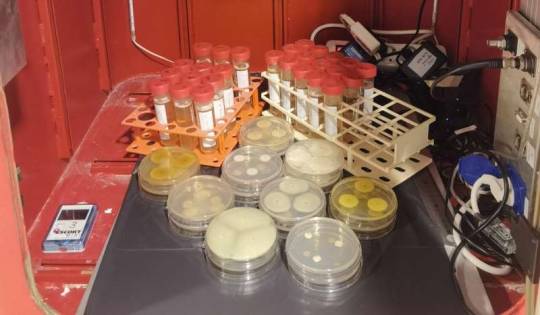
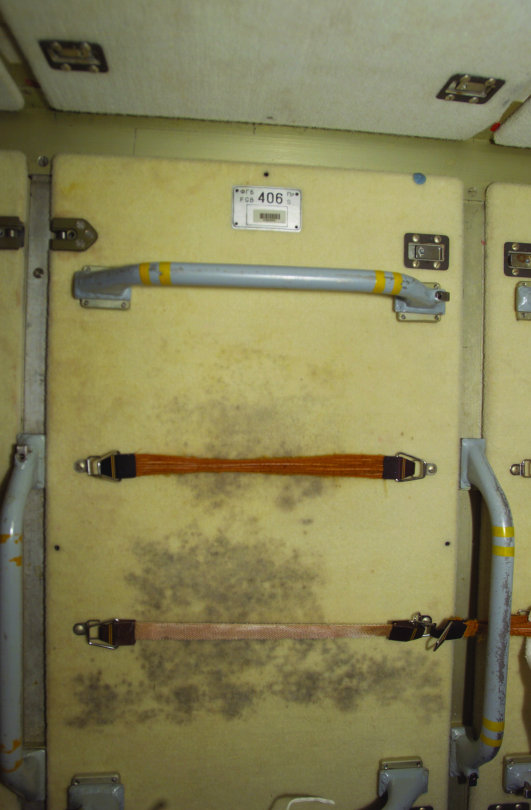
Turning up gravity for space fungi study
Fungi in space have been a plot point in Star Trek: Discovery, but they are also a very real problem for astronauts and space stations. United Nations co-sponsored testing by a team from Macau in China subjected fungi to hypergravity with ESA's fast-spinning centrifuge.
A team from the Astrobiology group of the State Key Laboratory of Lunar and Planetary Sciences at the Macau University of Science and Technology of Macau—a special administrative region of China—used ESA's Large Diameter Centrifuge at the ESTEC technical center in the Netherlands to test the growth of fungal colonies under double normal Earth's gravity.
Up until now the Macau team has been making use of 3D clinostats—otherwise known as random positioning machines, which continuously shift their orientation of the gravity vector to simulate microgravity conditions—to test how fungi respond to weightlessness.
Access to the LDC was arranged through HyperGES, part of the Access to Space for All initiative of the United Nations Office of Outer Space Affairs, UNOOSA.
The LDC is an 8 m-diameter four-arm centrifuge that gives researchers access to a range of hypergravity up to 20 times Earth gravity for weeks or months at a time.
At its fastest, the centrifuge rotates at up to 67 revs per minute, with its six gondolas placed at different points along its arms weighing in at 130 kg, and each capable of accommodating 80 kg of payload.
Their two weeks using the LDC enabled the Macau team extended testing into hypergravity conditions, supported by ESA's Life Support & Physical Sciences Instrumentation Laboratory team.
Fungal species were grown until full mature grown was achieved, and then examined to check for genetic or "phenotypic" stress reactions.
Next, one of the selected fungal species underwent a second generation of exposure to hypergravity to see if any stress reactions or alterations were maintained, or whether cumulative effects might be observed. As part of the analysis, selected samples were also analyzed under a scanning electron microscope at ESA's nearby Materials and Electrical Components Laboratory.
"The study of fungi in space is called 'astromycology,' a subset of astrobiology," explains Marta Filipa Simões, leader of this project from Macau University of Science and Technology.
"The ship's engineer in Star Trek: Discovery is an astromycologist, but this is indeed a real field of study and an increasingly important one. Fungi have a long history of making it into space and can have serious impacts once they are there."
The Russian space station Mir experienced fungal contamination as it aged. Portholes became obscured while plastics and metals were corroded, triggering malfunctions in turn—and wider concerns for the station structure.
Prof. Simões adds, "The International Space Station has had its own issues in rooms where crewmembers exercise, with higher humidity leading to fungal contamination on the walls. They have to do a lot of regular cleaning and disinfecting to prevent it.
"In a closed system like the ISS, any time you have the growth of biofilms, which fungi use to stay in place, you can have problems. This can be a serious concern because fungi might also trigger infections or allergic responses in astronauts, whose immune systems are themselves depressed in space. Conversely many fungal species appear to have their growth promoted in microgravity conditions—it is part of our present study to try and better understand why."
Some fungi are always going to make it to space, with hardy fungal spores able to adhere to all sorts of surfaces and tissues, such as the human body. Spacecraft cleanrooms are never pristine in practice; biological surveys show they are home to fungi and other microorganisms.
"We are never going to be able to get rid of fungi entirely as we venture into space, so we need to understand them," says André Antunes, part of the research team of Macau University of Science and Technology.
"In addition, they offer positive opportunities as well as risks. Down on Earth fungi are employed to make food—such as yeast for fermentation—as well as medicines, chemical enzymes for industry as well as metal nanoparticles used in numerous fields.
"For future space settlement they might be harnessed to cover different types of needs,, including recycling, or mining essential minerals out of planetary surfaces. These are seen as essential in helping to reduce costs and ensure sustainability of crewed space exploration."
The next HyperGES team to perform experiments on the LDC comes from Mahidol University, Thailand. They team will investigate how watermeal—the smallest flowering plant on Earth, even smaller than the more familiar duckweed—responds to changing gravity levels to assess its usefulness for space-based life support systems.
TOP IMAGE....Fungi species being prepared for exposure to hypergravity inside a spinning gondola of ESA's Large Diameter Centrifuge. Credit: UNOOSA
LOWER IMAGE....Fungi observed on the ISS, growing on a panel of the Russian Zarya Module where exercise clothes were hung to dry. Credit: NASA/ESA
10 notes
·
View notes
Photo

Dimensional Shattered Reflective Crossover (2022)
-----------------------------
this has a lot of tags...
anyway here are the credits...
Credit for Steven Universe series goes to Rebecca Sugar
Credit for Deltarune & Undertale goes to Toby Fox
Credit for Star Vs The Forces Of Evil goes to Daron Nefcy
Credit for Gravity Falls goes to Alex Hirsch
Credit for The Owl House goes to Dana Terrace
Credit for Amphibia goes to Matt Braly
Credit for My Little Pony: A New Generation goes to Hasbro Studios & Boulder Media Allspark
Credit for My Little Pony Friendship Is Magic goes to Lauren Faust
Credit for Cuphead Series & The Cuphead Show! goes to Studio-MDHR
Credit for Hazbin Hotel goes to Vivienne "Vivziepop" Medrano
Credit for Info-Chan From Yandere Simulator goes to YandereDev
Credit for The Bendy Series goes to Joey Drew Studios Inc.
Credit for Invader Zim goes to Jhonen Vasquez
Credit for The Grim Adventures of Billy & Mandy goes to Maxwell Atoms
Credit for The Powerpuff Girls goes to Craig McCracken
Credit for DuckTales 2017 series goes to Matt Youngberg & Francisco Angones
-----------------------------------------------
Blossom in this drawing, is suppose to be the same age as Huey,
and they form a friendship, that is why the words “Best Friends” is there for them.
I plan to use this drawing for my tumblr page, too.
and yes both Charlie Morningstar’s Dad & Devil from Cuphead Show,
are wearing sweaters.....
Devil is wearing the Himbo sweater, while Charlie’s Dad Lucifer
is wearing the Eon Boomer sweater.
you have to admit that Devil from The Cuphead Show,
seems to be a Himbo....it might just be me who thinks that.
don’t know if there will be a lot of people who would agree.
if you look up the definition of “Eon” some might understand why I started to use the word “Eon-Boomer”.....and well it can be seen as being around WAY longer than Baby Boomers....I mean, it does make sense if you really REALLY thinking about it....I’m just weird enough to have that pop into my head.
plus if Devil from Cuphead Show, has been around for centuries to even eons, that would make him an Eon-Boomer.
even Octavia’s Dad would be a Eon-Boomer, and let’s see, most of the Hierarchy in Hazbin Hotel & Helluva Boss....
and it wouldn’t just be in Heck, either....
anyway the reason why Cadance, Shinning Armor and Cozy Glow’s Cutie Marks
are in the same space, has to do with a theory I have that is about Cozy Glow secretly being Shining and Cadance’s daughter.
both Chrysalis and Tirek are Royalty, and Cozy Glow is possibly Royalty,
and she has blue mane, pink coat and is a pegasus.
it does kind of suck that out of all the ponies that don’t get reformed,
it’s Pegasi, I can’t be the only one who notice this, right...?
unless there is a comic that shows different, and I guess I could try to look it up to see if there is a comic canon about a Villain Pegasus being reformed...
but my theory about Cozy Glow is wrong, and maybe she isn’t their daughter.
but it doesn’t change the fact that there could be a reason why she ended up with a twisted view and became corrupted.
and from what we know of the whole ponies throwing some creatures from their native homes in the forest, and right into Tartarus.
oh and let’s not forget, instead of just sending Cozy Glow to the Human World (where Sunset Shimmer lives currently.)
they decide to send her to Tartarus.
I can still like a show but can disagree with certain actions that heroes end up doing, that can do more harm than good.
maybe magic leaving Equestria was Karma.
it’s like you can only misuse magic so much before karma comes to play.
same goes for Star Butterfly scapegoating magic as the problem,
but in truth it was her and her family that were the problem, because of their misuse of the magic.
magic can only become a problem, if it is being misused by it’s wielder.
and I still think Chrysalis became traumatized and it is the reason why she rejects the magic of friendship, and I also believe she isn’t really Thorax and Pharynx’s Mother, and that she was once a pony before being brought back to life as a changeling.
plus Princess Celestia keeping Magical Artifacts that don’t belong to the ponies, and one of them belonging to possibly Thorax and Pharynx’s True Mother....
it just doesn’t seem right, shouldn’t all those artifacts be returned to the Changelings, Yaks, Dragons, Griffin and Hippogriff...?
and there could be other fans who have been starting to question it as well.
maybe just don’t worry about it for now...
besides Cozy, Shining and Cadance’s Cutie Marks being in this drawing,
this drawing also has Sunny Starscout’s Cutie Mark, too.
Info-Chan is in her Silhouette form in this drawing, with only her hair and glasses showing.
I should check to see if there is any new updates for Yandere Simulator.
Sans is in this, but you can only see his mouth and body with a human and monster soul right next to him, and the top half where his eyes and the rest of his head should be, it has Steven Universe instead...
because of the whole Steven Quartz Universe and Sans being one in the same
(but in theory, it would be the human half that becomes Sans, while the gem half continues as Steven in Steven Universe Future.)
this drawing also has “Eyes, Butterflies and Symbol for Earth.”
The Puppet’s Mask being “Purple” instead of “White”,
kind of reminds me of Purple-Guy, for all we know we might of been tricked and “Purple-Guy” could turn out to be The Puppet of The Classic Animatronics, and Toy-Puppet was their replacement.
I think I will talk about that theory later....
right now I’m going to read one of my FNAF books.
anyway this is all I have to say, so see ya later and stay safe everyone.
#star vs the forces of evil fanart#gravity falls fanart#deltarune fanart#undertale fanart#steven universe fanart#cuphead show fanart#hazbin hotel fanart#amphibia fanart#info-chan#yandere simulator fanart#the grim adventures of billy and mandy fanart#bendy fan art#Invader Zim Fanart#five nights at freddy's fanart#powerpuff girls fanart#ducktales 2017#ducktales fanart#my little pony fanart#crossover fanart
20 notes
·
View notes
Text
Ok, so I/we're, as discussed, presumably not in a simulation.
But...As Descartes, Bostrom and Musk have mentioned, there exists the possibility that our world is a simulation. The supposition opens us to the obvious question: where the hell is this simulation running?
If we are in a simulation, we would probably have to be in a simulation running somewhere life has pretty much been able to solve pretty much all of its pressing concerns i.e., survival, quality of life, poverty, crime &c. I would have to argue that perfectly simulating an entire world is a 'terminal' concern; id est., one could only justify 'starting creation over again' if one were not in the slightest bit concerned about one's survival and had a nearly infinite amount of time at one's disposal during which to run a gigantic simulation.
This more or less excludes civilizations on planets orbiting (most) stars, at least for me.(I suppose there is the possibility that some 'terminal'/highly advanced life-form on a planet such as ours might have accepted its fate of dying with its sun and so just decided to quick run a simulation of a possible alternate evolutionary path instead of trying to solve the problem of how to get of their doomed rock. Perhaps they've already solved this problem, and perhaps they're running this simulation really, really, really fast, but, minimally, running this simulation will take a really (really (really(really))) non-trivial amount of time.
I guess if we solve all of our problems in the next 100,000 years and birth a new non-organic life-form, it will still have 999,900,000 years, roughly, plus another 6 billion or so where its kind will be alone on its planet because the slowly heating sun will have baked everything organic to a crisp, time after which it will have to leave and find a new sun because its home will be consumed in a giant ball of fire.
So maybe I oversold my point; 7.5 billion is bit of a while.) Also (much more) excluded is a the possibility that the simulation is being run by a purely organic life-form. Organic life would not be able to access/participate in a simulation. I, nor any other organic life-form, have a plug with which to transfer consciousness into a simulation. There are serious problems with any alternative; the Matrix-humans having some kind of plug in the back of the head is fanciful without a complete integration of the human organism's neurology with the machine interface on the level of genetics and mechanics.
Also, we have to assume that the beings running the simulation are immortal; cybernetic jellyfish aside, this basically leaves us with engineered non-organic life. It also seems reasonable to assume that whatever life-form is simulating us is radically different/comes from a world radically different from us/ours; alternatives don't really justify simulation.
So either the simulation is being run on a radically different planet orbiting a star, or it's not on a planet orbiting a star at all...Within the bounds of our highly implausible field of supposition it is therefore somewhat plausible that the (still highly implausible) simulation is being run on a planet which is about as different from ours as possible: on the moon of a rogue planet protected from radiation by the strong magnetic fields of a gas giant host planet.
I'm still working out a way for there to be enough heat on this kind of world to have water; tidal forces produce volcanism and heat on Io, so there is a possibility that gravity itself could produce heat on this here; the planet would have no regular light source, so the lack of photosynthesis would demand life be radically different enough and no solar life-span limitations would demand it be permanent enough to give it time to undertake such a project as simulating another world. I guess there's the possibility of life existing around a red dwarf, which could still have a habitable zone, and they last for trillions of years, so that might be a good candidate for our simulation's base reality as well.
But nah.
2 notes
·
View notes